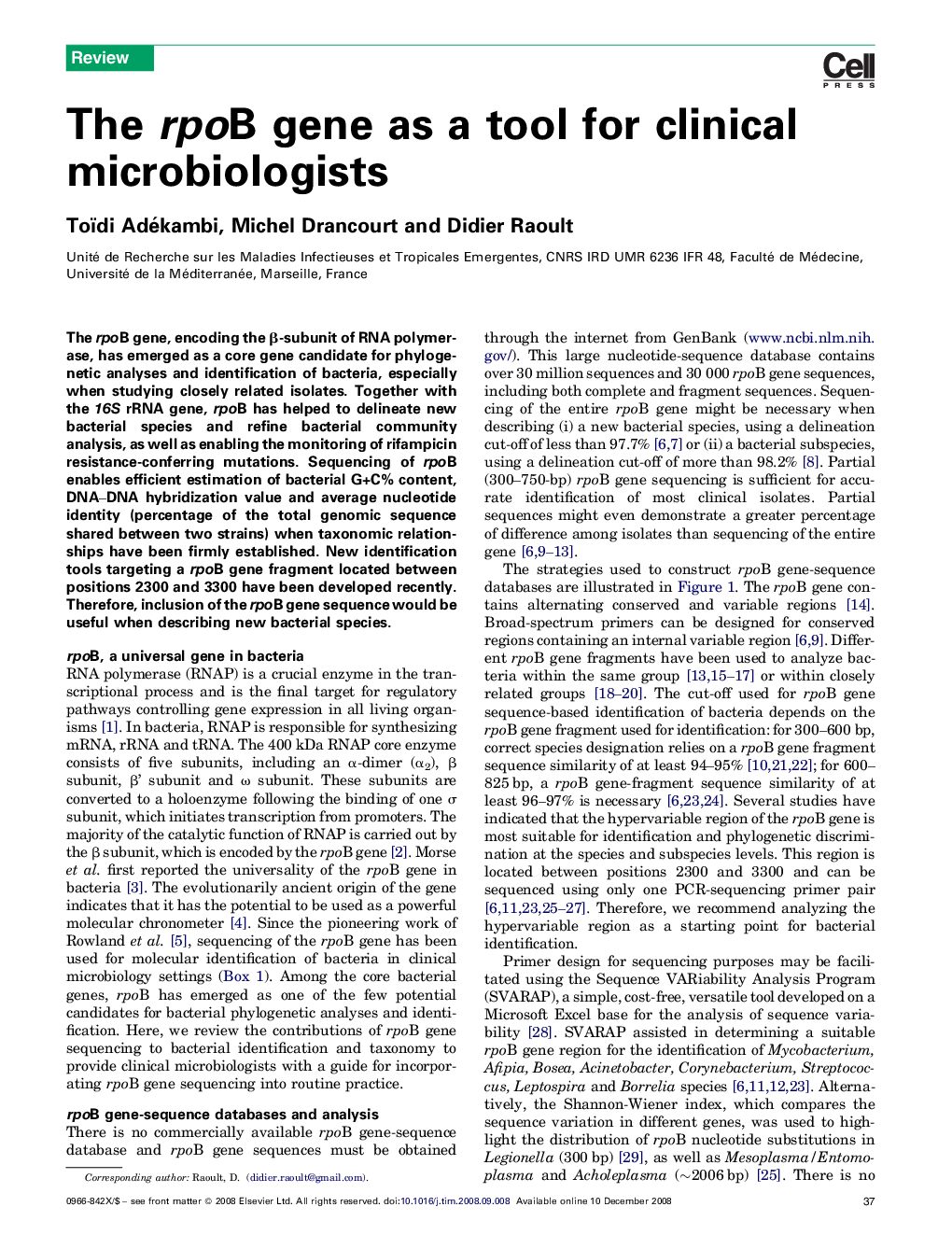| Article ID | Journal | Published Year | Pages | File Type |
|---|---|---|---|---|
| 3422648 | Trends in Microbiology | 2009 | 9 Pages |
The rpoB gene, encoding the β-subunit of RNA polymerase, has emerged as a core gene candidate for phylogenetic analyses and identification of bacteria, especially when studying closely related isolates. Together with the 16S rRNA gene, rpoB has helped to delineate new bacterial species and refine bacterial community analysis, as well as enabling the monitoring of rifampicin resistance-conferring mutations. Sequencing of rpoB enables efficient estimation of bacterial G+C% content, DNA–DNA hybridization value and average nucleotide identity (percentage of the total genomic sequence shared between two strains) when taxonomic relationships have been firmly established. New identification tools targeting a rpoB gene fragment located between positions 2300 and 3300 have been developed recently. Therefore, inclusion of the rpoB gene sequence would be useful when describing new bacterial species.
